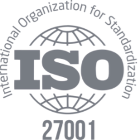Clearly, based on the past year, we have no idea what the future will hold. Businesses have had to entirely change the way they operate, adapting to our "new normal." As we begin to move out of the pandemic, there is still a great deal of uncertainty. Many companies are continuing to work remotely, while others are looking to bring team members back into the office as soon as possible. Whatever changes your organizations may be undergoing, the future is still unpredictable. Planning is a significant component of any company, and it is crucial to plan accurately and confidently in order to make the best possible decisions for your organization.
Workforce planning is the process of ensuring an organization has the right number of people with the right skills in the right place at the right time to deliver business goals. Essentially, it's thinking ahead to make sure your team is suited to meet your short-term and long-term goals. There are two major facets of workforce planning; operational and strategic. Operational planning is the short-term perspective of your operations and goals. This facet typically looks at operations within the next 1-2 years and helps map out existing skills, capabilities, and resources in accordance with near-term requirements. Strategic planning looks at long-term needs, addressing the number of people required to execute business strategy and the skills and capabilities that they may need to acquire.
Reactive to Proactive
If we have learned anything from the COVID-19 pandemic, it is that it's better to be proactive than reactive, which is a critical component of preparing for the unpredictable. Many managers recognize the importance of strategic planning and proactivity. Still, it can be challenging to achieve at times, especially when you only have the capacity to plan at an operational level. To begin the transition to strategic workplace planning, we’ll walk through five best practices to becoming proactive.
First and foremost, you need to get actionable. Delivering actionable information and data that is useful to making a decision or solving a problem serves as excellent inspiration for team members. Providing information that clearly points to a decision or action will encourage team members to act upon it and give them a clearer understanding of the business strategy at hand. If you have a goal of driving sales in a new region, your actionable task may be to plan for a new talent pool in that region. With this determined, you can plan out the cost of that investment, identify time to fill roles, and map out how this will be achieved.
Secondly, it is crucial to building relationships. When you implement workforce planning, it will be critical that you have relationships with the leaders that are key to its success. This way, the leaders will have a robust understanding of the plan and be able to convey that to other team members with clarity and success. This will ensure an easier and faster path to success through workforce planning.
While introducing plans to leaders, it's essential to create a sense of urgency. By emphasizing why a plan is critical, they can make the right investments quickly and efficiently to ensure that the project is carried out correctly. For example, if you plan to bring on new team members, it's important to share this with the facilities manager with the number of team members and a timeline for their arrival. With this knowledge, they can accurately prepare the facility and make necessary preparations on time.
Another significant aspect of proactivity is to streamline the planning team. By dedicating one individual to workforce planning, you can ensure that these crucial tasks are not being passed along or confused between parties. This "master planner" will configure the plan, adjust it monthly, and collaborate with contributors. By leaving the planning to an individual team member, you can be confident that all information is centralized in one person, reducing the risk of miscommunication or errors.
The last practice to achieve proactivity, or strategic workforce planning, is to get ahead of the talent acquisition curb. For effective organizations, the planning process is so well-communicated and efficient that talent acquisition teams do not need to wait to know when to hire. This is because the workforce place has already taken into account turnover assumptions and the need for new talent, allowing their recruiting teams to predict future hiring needs. Not only does this make it easier to bring on new talent, but it is also a huge help in budgeting talent more accurately and managing facilities for growing organizations.
Tools
Workforce planning is most effective when the Human Resources, Finance, and Talent Acquisition teams interact continuously and together. This way, communication flows to take advantage of the strategic planning, adapting to reflect the unpredicted. However, even with the most efficient communication, workforce planning cannot be effective with outdated tools. Many organizations still rely on spreadsheets for their workforce planning which can be slow and limit collaboration. Security breaches are a considerable risk in spreadsheets, in addition to being time-consuming, error-prone, and inflexible.
An excellent alternative to spreadsheets is cloud-based analytics-driven workforce planning tools. These solutions will eliminate the challenges faced by traditional spreadsheets, turning planning into a more agile, collaborative, and fact-based process. The right workforce planning technology should enable you to create an accurate forecast that frees up the budget, right-size the workforce, predict and model scenarios, track workforce plans, generate alignment between finance and initiatives and prepare for mergers and acquisitions. HR analytics solutions such as these will connect the data from HR, finance, and business systems to provide a holistic picture of your organization. Not only will this ease communication and speed up planning, but it will provide you with more accurate information to improve your planning and prepare your organization for whatever comes your way.
Benefits
Workforce planning, both strategic and operational, is instrumental in preparing your organization for the future. Equipping yourself with advanced workforce planning tools will increase communication, speed up the planning process, and provide you with more accurate information to use in forecasts and scenarios to receive clear and concise data. Beyond this, you will also have the ability to develop cost scenarios to understand the impact that changes could have on business. This will allow you to prepare for upcoming costs and even find ways to avoid them. You will also have more clarity over your workforce demand, allowing planners to compare future workforce scenarios and compare the costs of team members over time.
Overall, this strategic workforce planning is a continuous and dynamic process that helps organizations make accurate talent decisions to cultivate business success. This process does not replace operational planning but enhances it to help you make intelligent, data-driven decisions to balance short and long-term needs. Not only is the future unpredictable, but so is the present at times. With a responsive and proactive workforce, your organization will have the skills to adapt to any situation and rebound stronger than ever. With agility and resilience, you will find your company ready for whatever life throws at you.

![Benefits of Collaboration in the Workplace [+Collaboration Examples]](https://www.yarooms.com/hubfs/Benefits%20of%20Collaboration%20in%20the%20Workplace%20%5B%2BCollaboration%20Examples%5D.png)






